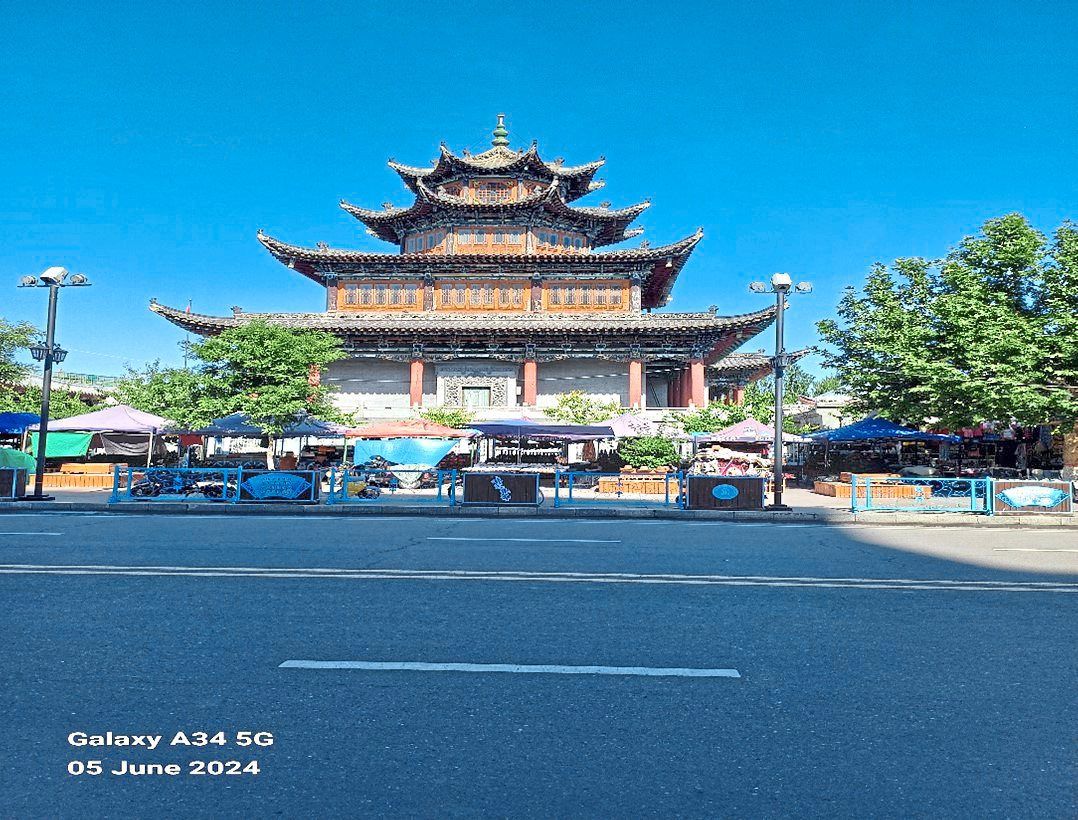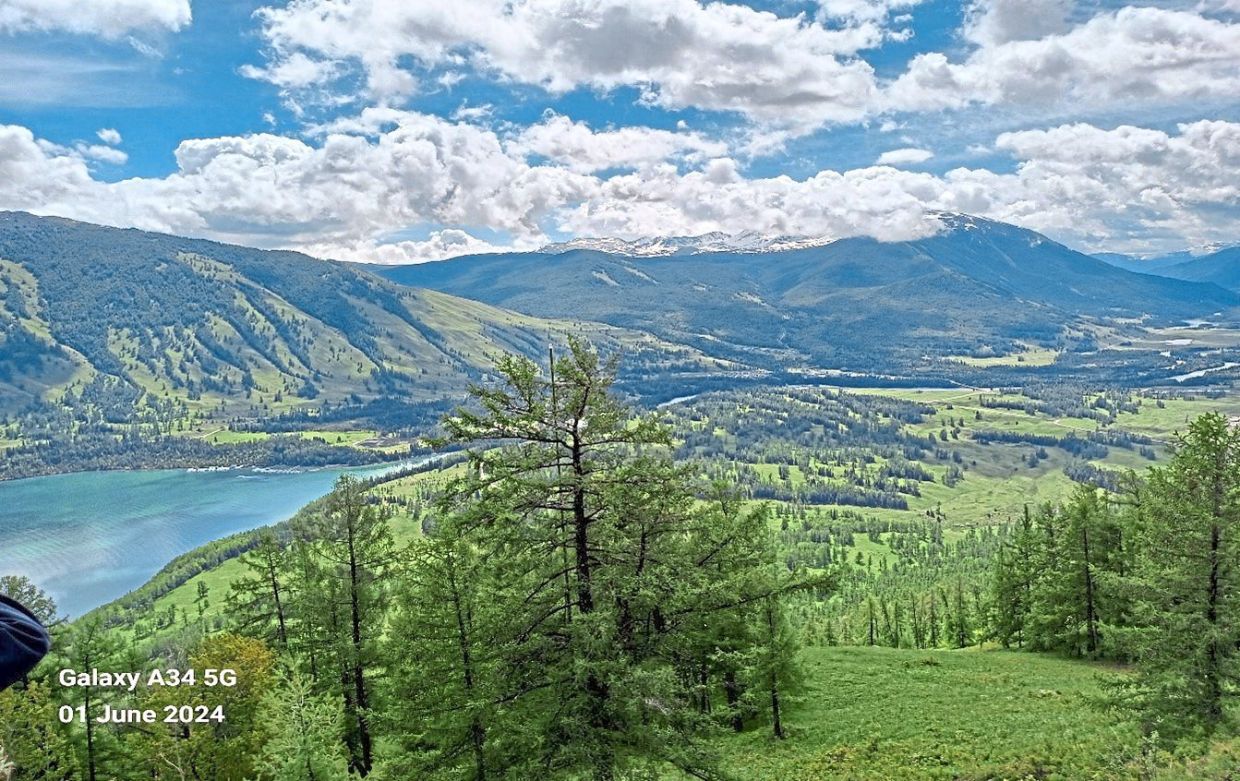Beautiful grassland surrounded by mountains and crowned with rainbow. — Photos: LEE KIM CHAI
A few months ago, a group of 24 of us went on a 10-day tour to Xinjiang in China. We had heard so much about this beautiful province and decided to visit the place.
June is a good time to visit this part of the world, as the temperatures are around 20°C and the weather is favourable. The Xinjiang Uygur Autonomous Region in northwest China is a very big province, taking up one-sixth of the size of China. It has a population of 23 million with more than 40 ethnic minorities. To give you a better idea of how big this region is, eight of the 15 countries that border China can be found here.
In spite of the vast expanse, it is well connected with highways, expressways and even a high-speed railway.
After a night’s rest in Urumqi, we made our journey to Burqin. Along the way, we visited the famous Wucaitan Scenic Area. “Wucaitan” means “five-coloured beach”, thanks to the colourful rock formation adjacent to the Irtysh River.
As we were approaching Burqin, we passed by a very, very long stretch of wind turbine farm, which I assumed generated renewable energy that’s fed to the electricity gridlines.
Our next destination was the Kanas Nature Reserve which is on the northeast of Xinjiang, bordering Mongolia and Russia. Along the way, the scenery was picturesque and breathtaking, with vast expanses of green pasture and snowy peaks, the Altay Mountain in the background.
From the Guanyu pavilion, we had a panoramic view of the Kanas Lake as well as its surrounding area.
In Kanas, we had the opportunity to watch a cultural performance featuring one of the ethnic minority groups, the Tuva tribe, who are said to be the descendants of Genghis Khan.
Not too far from the Kanas Nature Reserve is the Hemu Village. We passed by winding mountain roads and saw birch trees and streams along the way. We also saw a beautiful rainbow that formed across the whole sky. Seeing this from such a high altitude made it seem like it was so close to us.
The Hemu River cuts through the village. The water was sparkling clear that day, as it was flowing with melted snow from the surrounding mountain ranges.
The village is mostly inhabited by the Tuva, who prefer to stay in their traditional wooden houses and live a simple lifestyle.
Next, we travelled towards the western part of Xinjiang, to the town of Karamay. We saw many oil fields there, as Karamay is well known for its vast oil reserve. About 45 minutes north of Karamay is the Karamay Ghost City, a place that got its name from the sound the wind makes as it passes through the many rock formations.
Here, we saw many unique rock formations of different shapes, colours and sizes. Apparently, this is where many films and shows were shot, including the award-winning Crouching Tiger, Hidden Dragon.
From Karamay, we went to Sayram Lake. This is a mountain lake of about 450sq km in size, located at an altitude of about 2,000m above sea level. The scenery was breathtaking, with the azure lake surrounded by snow-capped mountains. The vast grassland covered in yellow wild chrysanthemum flowers resembled a woven carpet.
We then moved on to the city of Xining, and then to the Nalati Grassland. This place is known for its beautiful grassland. We saw herds of cattle, sheep and horses wandering leisurely at the foot of the mountain.
After watching an entertaining cultural performance by the Kazakh ethnic minority, we returned to Yining and visited the “six-star street”, which is an old district built in the 1930s. It is called “six-star” because of its design: Six main streets converging into its centre, which houses the commercial area, a school, a mosque and a church.
We also visited another ancient city called Kazanqi which is mostly inhabited by the Uygur folks. Here, we were invited to the homes of some of the locals, and were treated to cultural performances of the Uygur and Kazakh people.
We saw a pagoda-shaped building which turned out to be the ancient Shaanxi Mosque. This mosque was built in 1781 and is one of the cultural relics in China under national protection.
The next day, we took the high-speed train to Urumqi, the capital of Xinjiang. The ride was smooth and comfortable. Upon reaching Urumqi, we headed straight to the Xinjiang International Grand Bazaar, touted as the world’s largest bazaar. You can see Islamic culture and architecture, as well as traditional trades and wares, and dining too. It is best to get your souvenirs and snacks here as you can find handicrafts, fruits, dates, walnuts, ointments, and even barbecued meats.
Lastly, we visited the Huoyan Mountain or Flaming Mountain in Turpan. It is so called because it is said to be the hottest place in China. During our trip, the temperature was 41°C, though the highest recorded temperature is said to be 76°C!
Our trip would not be complete without mentioning the delicious local cuisine with dishes like roasted lamb, barbecued lamb and beef, naan, and some milk products.
All in all, Xinjiang is a great place to visit as it has amazing natural wonders, a rich history, great cultural experiences and good food.The views expressed are entirely the writer’s own.









